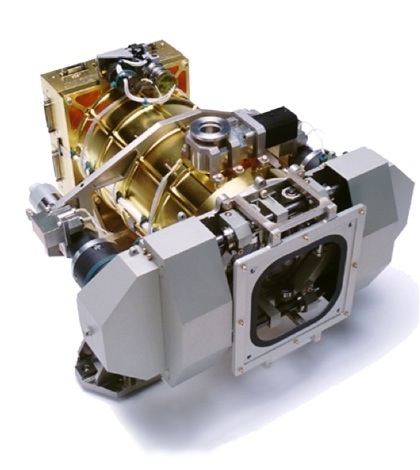TIM the satellite solar sensor tracks climate change’s natural drivers

The Total Irradiance Monitor (Credit: Laboratory for Aerospace and Space Physics)
When the fairing on the launch vehicle carrying NASA’s Glory spacecraft failed in 2011, sensors worth millions went careening back toward Earth. The craft smashed into the ocean and everything onboard was destroyed. One of those sensors was the Total Irradiance Monitor, a device built to track changes in the sun’s variability.
The fairing was designed by Orbital Sciences Corporation. The Total Irradiance Monitor, or TIM, was designed at the University of Colorado’s Laboratory for Atmospheric and Space Physics. It was built to take measurements to help define how much influence the sun has on climate change.
When Glory didn’t achieve orbit, engineers at the lab took to work retrofitting a model they had developed for the SORCE satellite mission, which began collecting data in 2003. “With SORCE degrading and Glory having failed, NASA and NOAA appreciated the need for a prompt means of continuing the 35-year-long TSI (total solar irradiance) record,” said Greg Kopp, senior research scientist at LASP.
Scientists track solar irridiance because the sun provides nearly all the energy powering the Earth’s climate. “While most of the measured Earth temperature increase is due to human-caused effects, some is purely natural and due to solar variability, volcanic eruptions and changing ocean or atmospheric circulation patterns,” said Kopp.
When setting climate policies, it’s important to know how much of climate change humans can influence and how much is simply organic. “The TIM monitors that natural climate driver,” said Kopp.
To minimize data gaps, the adapted TIM needed to be in the sky as soon as possible and the lab was granted unusual leeway to complete the project with minimal oversight.

The Total Irradiance Monitor is part of the Total Solar Irradiance Calibration Transfer Experiment, assembled at Ball Aerospace (Credit: Ball Aerospace)
NASA and NOAA contracted the lab to deliver a fully space-qualified, calibrated instrument in only five months, says Kopp. “This is a shockingly short period for normal spacecraft programs,” Kopp said.
Kopp says the team had to work long hours and some weekends to meet the deadline. But with many typical oversights removed from the process, their efforts paid off quickly.
“Because of the tight time schedule, LASP personnel appreciated the day-to-day progress they could visibly see on the instrument,” said Kopp. This feedback kept the Total Solar Irradiance Calibration Transfer Experiment team enthusiastic about their collaborative mission between NASA and the National Oceanic and Atmospheric Administration to launch the TIM payload on the STPSat-3 satellite built by Ball Aerospace.
Part of the pre-launch effort involved calibrating the adapted TIM instrument and testing its components. LASP built a radiometer facility for testing the instrument and verifying its ability to measure total solar irradiance. The facility allowed the team to expose the instrument to flight-like vacuum conditions and to full solar irradiance.
The adapted TIM uses the same electronics as the instrument flown on the SORCE satellite mission, but Kopp says it features technological improvements over other instruments that measured total solar irradiance in the past. These include better optics to reduce scatter, more robust flight detectors that help with measurement stability and a servo system that reduces sensitivity to noise and thermal drifts.
At the conclusion of the mission, the U.S. Air Force successfully launched the satellite on Nov. 19 from NASA’s Wallops Flight Facility. It made it safely to orbit on a Minotaur I rocket. Kopp says the TIM on the SORCE mission satellite will be turned on for 11 days in December and run simultaneously with the new TIM. Taking measurements simultaneously ensures that there are no gaps in the record of total solar irradiance. “Such transfers help correct for calibration differences between instruments,” said Kopp.




Pingback: TCTE Launch! | digital. stories. by Patrick Brown